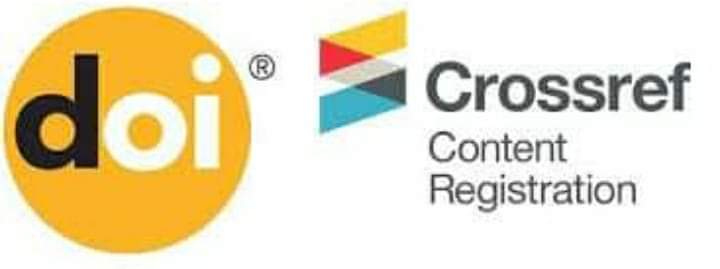
Policy and Publication
Terms, rules and controls for publication in the Journal:
1. The research should be in the field of medical sciences.
2. Publication in the journal should be in English.
3. The participation of each researcher with only one research number in the same number.
4. The research should not be old and five years or more have passed since its completion.
5. The research should be as brief as possible and not exceed fifteen pages; Except in the case of a review article, it should be a maximum of twenty pages.
6. Bearing in mind that the plagiarism percentage does not exceed 25%, and a research is presented to the Plagiarism Checker programs, to ensure that previously published research is not published.
7. The publication shall be according to a specific template for the journal Template limited to writing research in the journal bearing the university logo and the journal’s logo.
8. The publisher is bound by all the terms and conditions of publication for the journal.
9. The research has not been previously published.
10. The research should not be submitted for publication in another journal.
11. The publisher must fill out the journals copyright form.
12. The journal’s adoption of one of the well-known scientific formulas in coordinating scientific research and arranging sources such as Harvard Referencing Guide
13. Sort search content
The researcher is asked to adhere to the order shown in writing his research:
Paper structure:
- Title (include authors names, address, author Corresponding author)
- Abstract
- Keywords
- Introduction
- Methods and Materials
- Results and Discussion
- Conclusion
- References
The paper must be written in clear and concise English, normally in past tense, and should normally comprise:
- Paper title in front page.
- Abstract or summary include keywords.
- Materials and Methods.
- Discussion, with conclusion if appropriate.
- Acknowledgements, if any.
- References
Where appropriate the results and discussion may be combined, figures and tables should be selected to illustrate points that cannot easily be described in the text.
Style and layout
- Title page:
- This should carry the following information.
- The title of the paper should provide a concise statement of the contents of the paper.
- The name of the authors. Each author may use one given name in full.
- The author for correspondence must be clearly indicated.
- The name and address of place where the work was done.
- Keywords, maximum of five words or short phrases.
- Abstract:
- This section is likely to be read by more people than the full paper. Its therefore important that this section is clear and comprehensible in its own right.
- Reference should not be cited, and any non-standard abbreviation used must be defined.
- Introduction:
- This section should be state the objectives of the work when it was undertaken, but should not contain a detailed summary of the results.
- Should clearly talk more about the topic under concern in the article.
- Methods:
- Methods are the specific tools and procedures you use to collect and analyze data(for example, experiments, surveys, and statistical tests). In shorter scientific papers, where the aim is to report the findings of a specific study, you might simply describe what you did in a methods section
- Results:
- The results section of the research paper is where you report the findings of your study based upon the information gathered as a result of the methodology[or methodologies] you applied. The results section should simply state the findings, without bias or interpretation, and arranged in a logical sequence
- Discussion:
- This section should be recapitulate the results, and not too long.
- Should focus on explaining and evaluating what you found.
- The discussion section should relate your results to those found in other studies.
- The discussion should use the other studies to support you study and to compare your results with the findings from other studies.
- The discussion section should end with a concise summary of the principal implications of the findings regardless of their significance.
- References:
- Reference in the text should be cited as following:
- If two authors (A & B., 2021).
- If three or more (A et al., 2021)
- Reference by same author in same year should be distinguish by letters (a & b) as (2021a, and 2021b).
- Reference at the end of paper should be following Harvard Referencing Guide.
Tables:
Is used to support conclusions or illustrate concepts, Tables used to present numbers for comparison with other numbers or summarize or define concepts, terms, or other details of a study.
Figures:
- These must be selected to illustrate specific points; they should not be used to present results that can be described by brief statement in the text.
- Figures can take many forms, such as bar graphs, scatterplots, drawings, pictures etc. When using figures in a research paper, always think about the paper reader.









